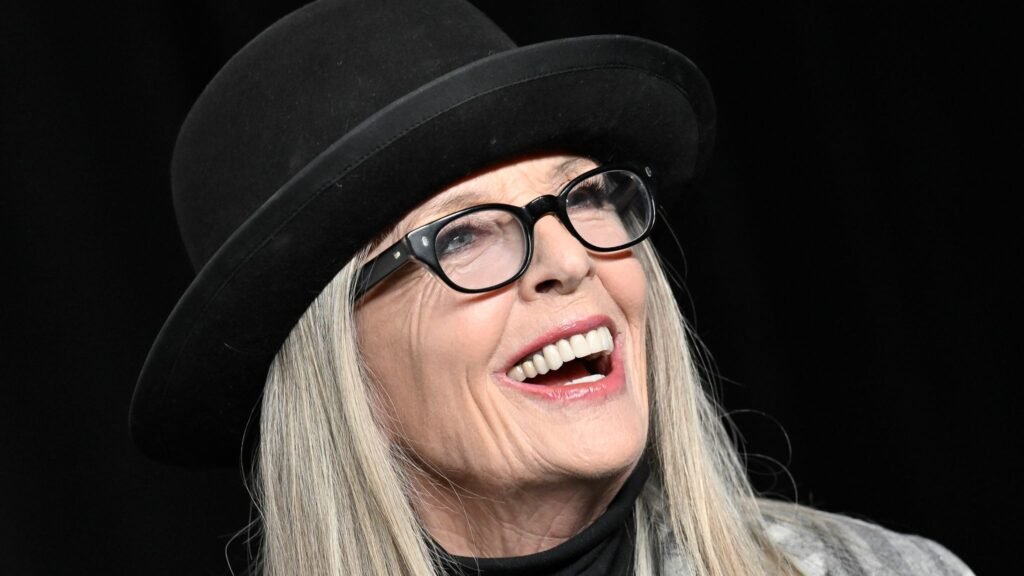The world woke to devastating news this week. Diane Keaton has died at seventy-nine, leaving Hollywood stunned and millions heartbroken. Her family confirmed her passing in California, requesting privacy during this unbearable time. The announcement arrived without warning, catching even her closest collaborators off guard. She was working until recently, vibrant and engaged, making her death feel impossibly premature.
Keaton wasn’t just an actress. She was a cultural force who redefined what it meant to be original. From her unforgettable turn as Kay Adams in The Godfather to her Oscar-winning performance in Annie Hall, she created a legacy that transcends generations. Her style influenced fashion. Her humour shaped comedy. Her vulnerability made strength fashionable. Diane Keaton built a career on being unapologetically herself, and the world loved her for it.
The Girl From Los Angeles Who Became an Icon
Born Diane Hall in January 1946, she grew up in Southern California during Hollywood’s golden twilight. Her mother, Dorothy, was a photographer and homemaker who kept meticulous journals. Her father worked as a civil engineer. The family valued creativity but never pushed showbusiness. Keaton found theatre on her own terms, joining school productions and falling in love with performance.
She studied drama at Santa Ana College before transferring to New York’s Neighborhood Playhouse. The city overwhelmed her initially. She was shy, self-conscious, prone to nervous laughter that would later become her trademark. But she persevered, taking odd jobs and auditions until Broadway noticed.
When she joined Actors’ Equity, another Diane Hall already held membership. She adopted her mother’s maiden name, Keaton, as tribute and necessity. That decision proved symbolic. Everything she achieved remained rooted in family, individuality, and the values her mother instilled.
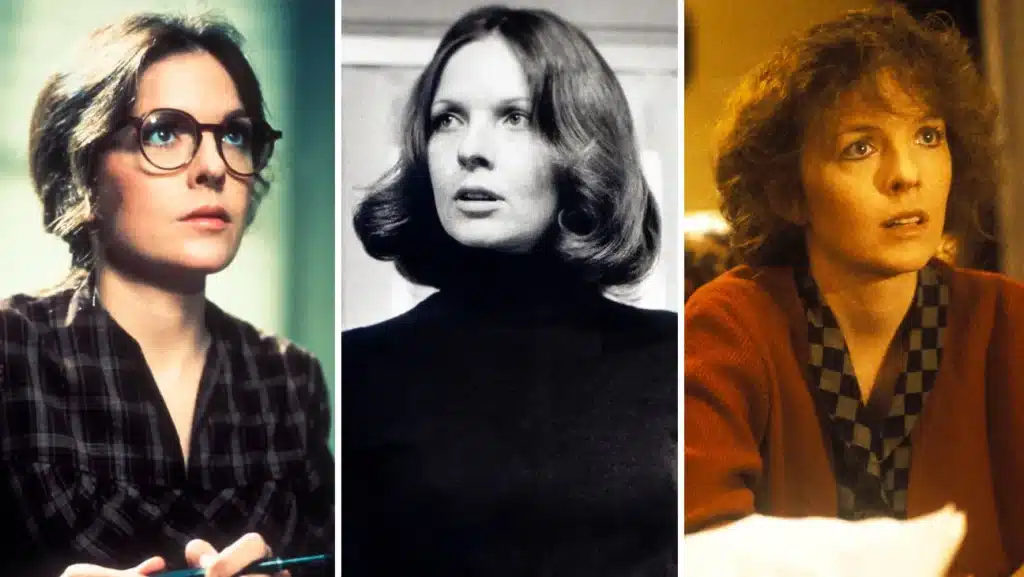
Broadway, Hair, and the Refusal That Defined Her
Keaton’s breakthrough came in 1968 when she joined the original Broadway cast of Hair. The counterculture musical shocked audiences with its nudity, politics, and rock-infused sound. Cast members performed nude during the finale, a bold statement about liberation and vulnerability.
Keaton refused. She wouldn’t disrobe, even when producers pressured her. The decision could have ended her career before it started. Instead, it revealed the independent spirit that would define her life. She believed in artistic expression but wouldn’t compromise her boundaries for shock value.
Woody Allen attended a performance and noticed her immediately. He cast her in his 1969 Broadway play Play It Again, Sam, beginning a collaboration that would change both their careers. Their chemistry felt electric, natural, rooted in mutual respect and intellectual sparring. When Allen adapted the play for film in 1972, Keaton reprised her role, marking her first major movie performance.
The Godfather and the Woman Who Humanised the Corleones
Francis Ford Coppola’s The Godfather premiered in March 1972, becoming an instant cultural phenomenon. Keaton played Kay Adams, Michael Corleone’s girlfriend and eventual wife. The role required delicate balance. Kay represented the outside world, normalcy, the life Michael claimed he wanted before power consumed him.
Keaton brought intelligence and emotional gravity to scenes dominated by masculine violence. Her Kay wasn’t naive. She saw the darkness but chose love anyway, a decision that would haunt her through two sequels. Critics praised her understated performance, noting how she held her own against Marlon Brando and Al Pacino.
During filming, Keaton and Pacino began a relationship that lasted years. They shared intensity, ambition, and complicated chemistry. Pacino later called her “the most talented person I ever worked with.” Their romance ended, but their artistic connection never did.
She returned for The Godfather Part II (1974) and Part III (1990), watching Kay transform from hopeful outsider to bitter prisoner. Her final confrontation with Michael in Part III remains devastating. She delivers rage, grief, and exhaustion in equal measure, reminding audiences why Coppola cast her decades earlier.
Annie Hall: The Role That Changed Everything
In 1977, Woody Allen wrote Annie Hall with Keaton in mind. The character drew directly from her personality—awkward, intellectually curious, prone to nervous laughter. She wore her own clothes for the film, creating the iconic menswear-inspired look that defined seventies fashion.
The film follows Alvy Singer’s neurotic romance with Annie, blending comedy with existential reflection. Keaton’s performance feels effortlessly real. She stammers, interrupts herself, laughs at inappropriate moments. She makes vulnerability magnetic.
Annie Hall swept the 1978 Academy Awards, winning Best Picture, Best Director, Best Screenplay, and Best Actress for Keaton. Her acceptance speech was characteristically humble. She thanked Allen, her family, and admitted she felt “completely overwhelmed.” The Oscar validated years of risk-taking and transformed her into a leading star.
The film’s influence extended beyond cinema. Women copied Keaton’s style—wide-leg trousers, vests, bowler hats, oversized shirts. Designers scrambled to recreate her aesthetic. Fashion magazines declared menswear the new feminine ideal. Keaton hadn’t tried to start a trend. She simply dressed like herself, and the world followed.
The Collaborations That Defined a Decade
After Annie Hall, Keaton could have coasted on romantic comedies. Instead, she chose challenging, unpredictable projects. She reunited with Warren Beatty for Reds (1981), an ambitious epic about American journalist John Reed and the Russian Revolution.
Keaton played Louise Bryant, Reed’s partner and fellow radical. The role earned her a second Oscar nomination and showcased her dramatic range. She brought fire and complexity to Bryant, refusing to make her merely supportive. Critics called it her most mature performance yet.
Throughout the eighties, she balanced art-house films with mainstream comedies. Shoot the Moon (1982) paired her with Albert Finney in a devastating portrait of divorce. Baby Boom (1987) let her explore comedy again, playing a Manhattan executive who inherits a toddler.
Not every film succeeded commercially, but Keaton never chased trends. She trusted directors, took risks, and prioritised interesting characters over safe choices. That fearlessness kept her relevant when many actresses her age struggled to find meaningful roles.
The Fashion Icon Who Refused to Follow Rules
Keaton’s style became as legendary as her acting. She rejected conventional femininity, favouring structure over softness. Long before androgyny became fashionable, she wore men’s tailoring with complete confidence.
Her wardrobe consisted of high-waisted trousers, crisp white shirts, vests, bowler hats, and statement belts. She layered textures and played with proportions. Designers from Ralph Lauren to Stella McCartney cited her as inspiration. Fashion students studied her compositions like art history.
She once joked that she dressed “like a confused magician who raided her grandfather’s wardrobe.” That self-deprecating humour masked serious intentionality. Every outfit reflected her personality—intellectual, playful, slightly eccentric. She understood that style communicates identity without words.
In 2004, InStyle named her one of the fifty most stylish women ever. She laughed off the honour but admitted she enjoyed fashion’s creative possibilities. Clothes gave her control in an industry that often stripped women of agency.
The Nineties Renaissance and Marvin’s Room
By the mid-nineties, Hollywood had largely forgotten actresses over fifty. Keaton refused to disappear. She took supporting roles, character parts, anything that interested her creatively. Then Marvin’s Room arrived in 1996, offering her the best role in years.
She played Bessie, a woman who spent decades caring for her dying father. When Bessie develops leukaemia, she must reconnect with her estranged sister, played by Meryl Streep. The film explores sacrifice, resentment, and the messy reality of family obligation.
Keaton delivered her most emotionally raw performance since Annie Hall. She showed exhaustion, bitterness, hope, and love without sentimentality. Critics praised her restraint and vulnerability. She earned her third Oscar nomination, losing to Frances McDormand for Fargo.
The role resonated personally. Keaton had recently become her mother’s primary caregiver after Dorothy’s Alzheimer’s diagnosis. She understood Bessie’s isolation, the way caregiving consumes identity. That lived experience informed every scene.
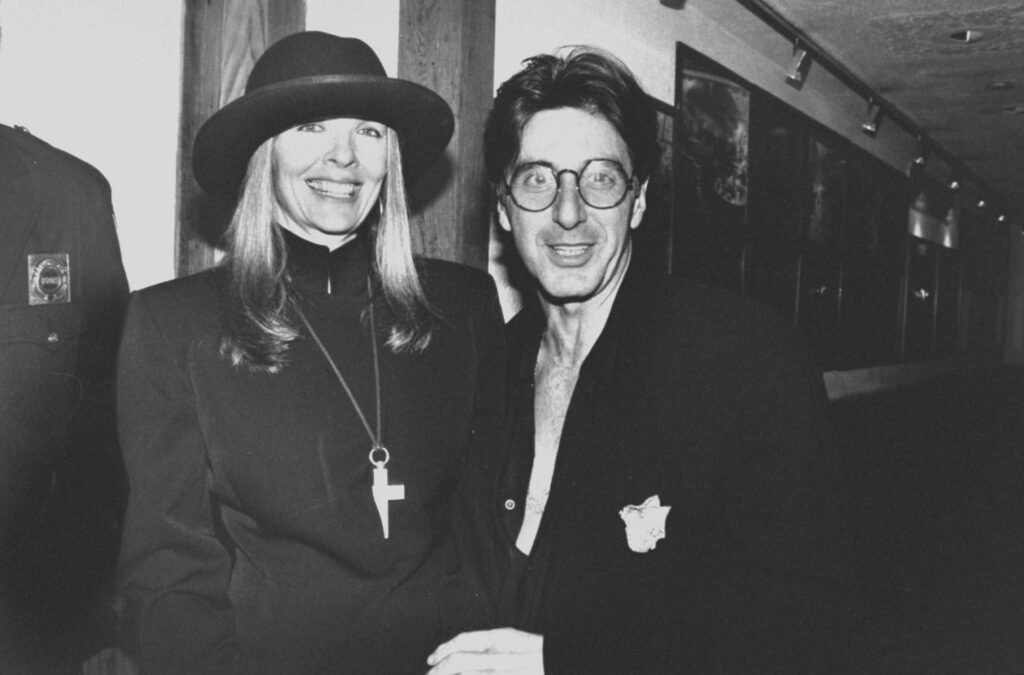
Something’s Gotta Give and the Power of Older Women
Nancy Meyers wrote Something’s Gotta Give (2003) specifically for Keaton, creating a romantic lead for a woman over fifty. Keaton played Erica Barry, a successful playwright who falls for Jack Nicholson’s ageing playboy after he has a heart attack at her beach house.
The film challenged Hollywood’s youth obsession, proving audiences craved stories about mature adults navigating love and vulnerability. Keaton brought humour and depth to Erica, making her flawed but compelling. Her crying scenes became instant memes, showcasing her willingness to look messy and real.
The performance earned her fourth Oscar nomination. She didn’t win, but the film’s success mattered more. It proved actresses over fifty could carry romantic comedies, open films financially, and appeal to broad audiences. Keaton single-handedly expanded possibilities for women her age.
She and Nicholson generated genuine chemistry despite never dating. Their friendship translated into playful, believable romance. Nicholson later called her “the easiest scene partner I ever had.” High praise from an actor known for demanding excellence.
The Relationships That Shaped Her Life
Keaton never married, though she shared significant relationships with some of Hollywood’s biggest stars. Her romance with Al Pacino lasted years and remained one of her most formative connections. She dated Warren Beatty during Reds, describing him as “the most divine man who ever lived.”
Her relationship with Woody Allen shaped her early career. They dated briefly but remained collaborators and friends for decades. Allen wrote multiple roles specifically for her, understanding her rhythms and strengths better than anyone.
In interviews, Keaton reflected on her singleness with characteristic honesty. She said marriage “just never felt like something I’d be good at.” She valued independence, solitude, and creative freedom. Romantic partnerships enriched her life but never defined it.
At fifty, she adopted her daughter Dexter, followed by her son Duke four years later. Motherhood transformed her completely. She called it “the most humbling, terrifying, joyful experience” of her life. Friends noted that her children grounded her, softened her perfectionism, and gave her life new meaning beyond career achievements.
Behind the Camera: Directing, Design, and Creative Restlessness
Keaton’s creativity extended far beyond acting. She directed several projects, including the film Unstrung Heroes (1995) and the television movie Elephant (2003). She approached directing with the same curiosity she brought to performance, studying composition and narrative structure obsessively.
She also directed music videos, most notably for Belinda Carlisle’s “Heaven Is a Place on Earth.” The video’s dreamlike aesthetic showcased Keaton’s visual sensibility and willingness to experiment across mediums.
Her passion for architecture and design led to published books celebrating residential style. She renovated and flipped historic houses throughout Los Angeles, preserving mid-century details whilst updating functionality. Each project reflected her aesthetic—clean lines, natural materials, spaces that balanced beauty with livability.
She photographed buildings compulsively, amassing thousands of images documenting architectural details others overlooked. Her books combined photography with personal essays, revealing how deeply she connected visual art with emotional experience.
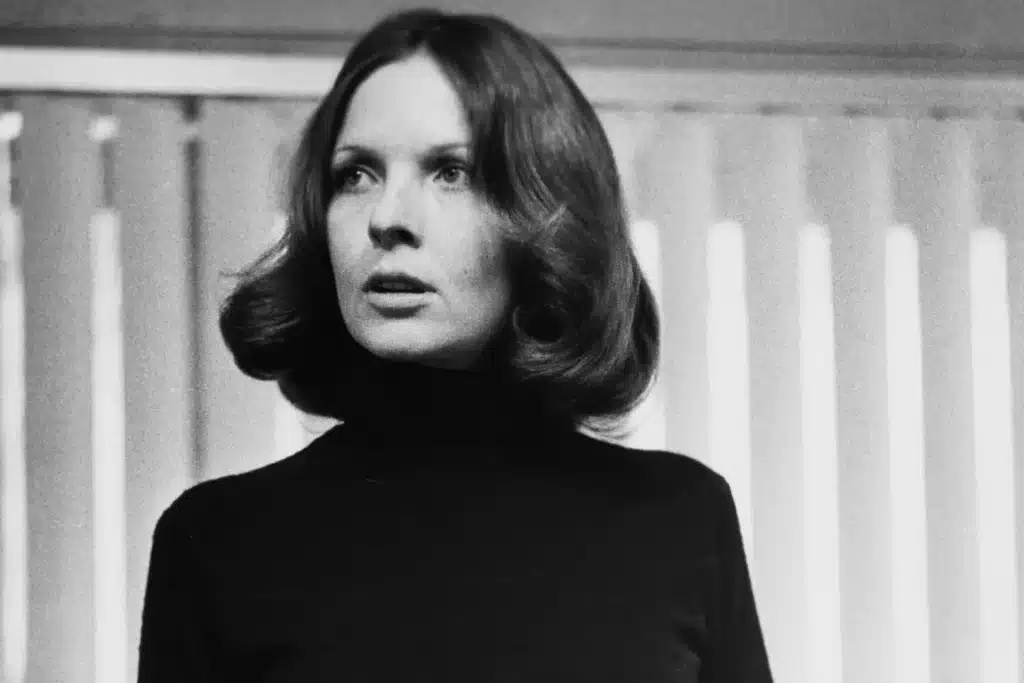
Caring for Her Mother and Brother
In 1993, Keaton’s mother Dorothy received an Alzheimer’s diagnosis. Keaton became her primary caregiver, navigating the disease’s cruel progression over fifteen years. Dorothy died in 2008, leaving Keaton grief-stricken but grateful for their final years together.
She processed that loss through writing. Her 2011 memoir Then Again intertwined her own journal entries with her mother’s diaries, creating a dual narrative about identity, memory, and family. Critics praised the book’s honesty and structural innovation.
Her brother Randy battled mental-health issues throughout his life. Keaton supported him financially and emotionally until his death in 2021. She rarely discussed these challenges publicly, preferring quiet advocacy over celebrity campaigns.
Those experiences deepened her acting. She understood loss, exhaustion, and the complex emotions caregiving demands. That wisdom informed her later performances, adding layers of empathy and nuance.
Hollywood Mourns an Irreplaceable Talent
News of Diane Keaton’s death prompted immediate, heartfelt tributes from across the entertainment industry. Meryl Streep released a statement calling her “our American treasure whose smile, style, and antic spirit will live forever on film.”
Robert De Niro, her co-star in The Big Wedding, said he felt “completely blindsided” by the news. He praised her as “a generous, fearless actor who made everything look effortless.”
Bette Midler, who starred alongside Keaton in The First Wives Club, described her as “brilliant, beautiful, and without guile—what you saw was truly who she was.”
Jane Fonda wrote that Keaton was “a spark of life and light who constantly giggled at her own foibles whilst remaining limitlessly creative.”
Leonardo DiCaprio, who worked with her on The Other Woman, called her “brilliant, funny, and unapologetically herself—a legend, an icon, and genuinely kind human being.”
The tributes shared a common theme: authenticity. Keaton represented honesty in an industry built on illusion. She never pretended, never performed offscreen. That genuine quality connected her with audiences across generations.
The Final Years and Last Performances
In 2017, the American Film Institute honoured Keaton with its Lifetime Achievement Award. She sang “Seems Like Old Times”—the song from Annie Hall—during her acceptance speech, reducing the audience to tears. She joked about her nervousness, then delivered a pitch-perfect performance that reminded everyone why she’d won an Oscar forty years earlier.
She continued working into her seventies, appearing in Book Club (2018) and its 2023 sequel Book Club: The Next Chapter. The films let her explore friendship, sexuality, and ageing with humour and intelligence. She called acting “the thing that keeps me curious about people and possibilities.”
Her final screen performance came in Summer Camp (2024), a comedy about rediscovering youth at seventies. She played a former camp counsellor confronting old rivalries and new possibilities. Reviews praised her timing and willingness to look silly.
In December 2024, she surprised fans by releasing a Christmas single titled First Christmas. Her voice sounded warm, slightly raspy, charming in its imperfection. She promoted it with typical self-deprecation, joking that nobody asked for her music career.
Her last social-media post appeared in April 2025. She shared a photo cuddling her golden retriever Reggie on National Pet Day. The image captured her essence—simple, joyful, focused on life’s small pleasures rather than fame’s demands.
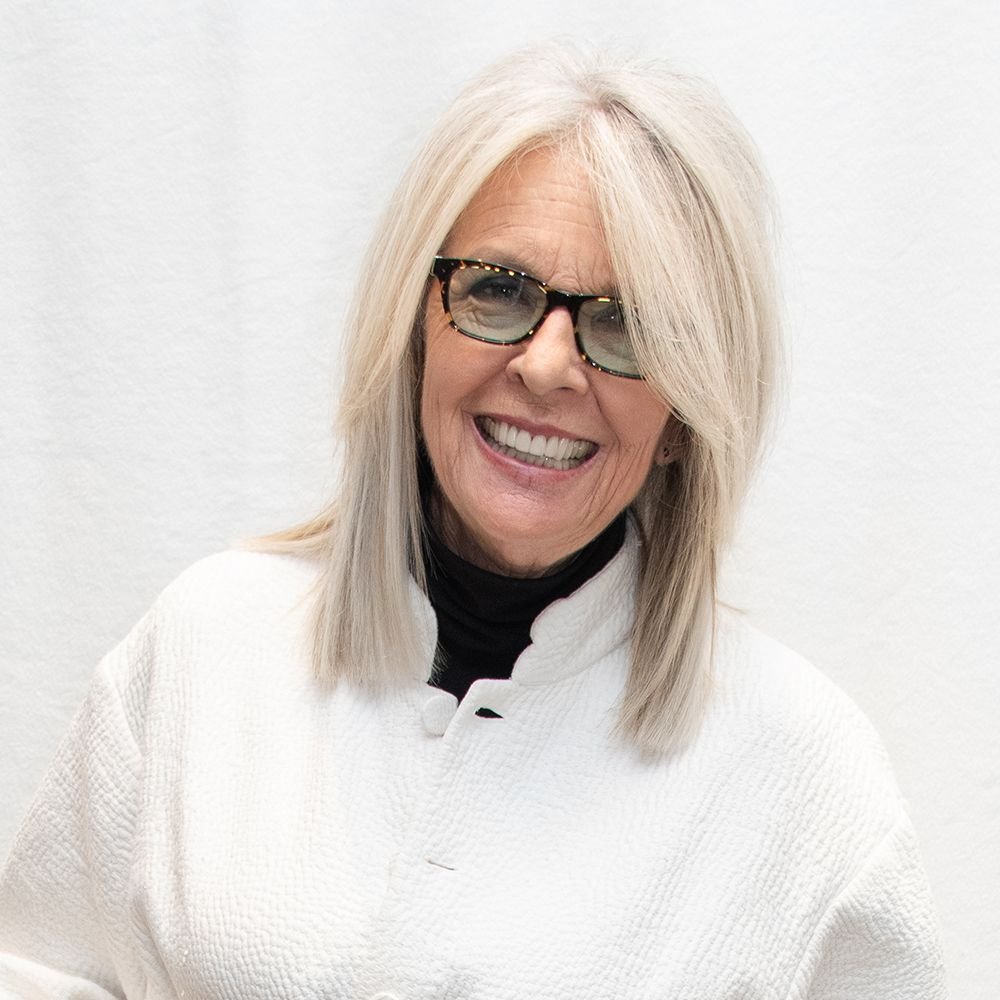
Why Her Influence Will Endure
Diane Keaton changed cinema by refusing to change herself. She made vulnerability powerful, intelligence sexy, and eccentricity aspirational. She proved women could be funny without being diminished, strong without being hard, fashionable without following trends.
Future actors will study her performances for their naturalism and emotional precision. Fashion students will analyse her wardrobe choices as masterclasses in personal branding. Audiences will rediscover Annie Hall and marvel at its perfect balance of chaos and charm.
She showed that ageing doesn’t require invisibility. Her sixties and seventies brought some of her best work. She demonstrated that women remain interesting, valuable, and bankable at every age.
Her style influence persists everywhere—from runway shows to street fashion to costume departments. Designers still reference her silhouettes. Stylists still recommend “pulling a Diane Keaton” when clients want timeless elegance with personality.
Fans Remember a Singular Spirit
Social media flooded with tributes within hours of the announcement. Film students posted clips of her dancing awkwardly in Annie Hall. Critics shared stills of her steely resolve in The Godfather Part III. Young actors quoted her interviews about creative courage.
From Tokyo to Paris to São Paulo, people mourned someone they’d never met but felt they knew intimately. Her performances created that connection. She made audiences feel seen, understood, less alone in their awkwardness and uncertainty.
Fans described discovering her films during difficult periods and finding solace in her vulnerability. They recalled watching Something’s Gotta Give with their mothers, bonding over Keaton’s messy crying scenes. They remembered dressing like her for Halloween, for auditions, for confidence.
The outpouring revealed how deeply she’d touched people. She wasn’t just an actress. She was a permission slip—proof that weirdness, independence, and authenticity could not only survive but triumph.
The Legacy Lives in Every Frame
Diane Keaton’s death at seventy-nine marks the end of an extraordinary life. But her influence continues everywhere cinema exists. She lives in every actress who chooses difficult roles over easy ones. She lives in every woman who wears menswear with confidence. She lives in every person who decides authenticity matters more than approval.
Her filmography remains remarkably diverse—from crime epics to romantic comedies, from political dramas to quirky indies. Each performance showcased different facets whilst remaining unmistakably hers. She never disappeared into roles. She brought herself completely, trusting that her specificity created universality.
Hollywood will host memorial tributes in coming weeks. Awards shows will feature montages. Critics will reassess her career. But the real memorial exists on screens worldwide—where Keaton still laughs, sighs, confesses, and loves with the same fearless vulnerability that defined her life.
She once said acting gave her “an opportunity to get to know more people in a different realm.” That curiosity, that openness, that hunger for connection defined her approach to art and existence. She treated every role, every interview, every interaction as a chance to understand humanity more deeply.
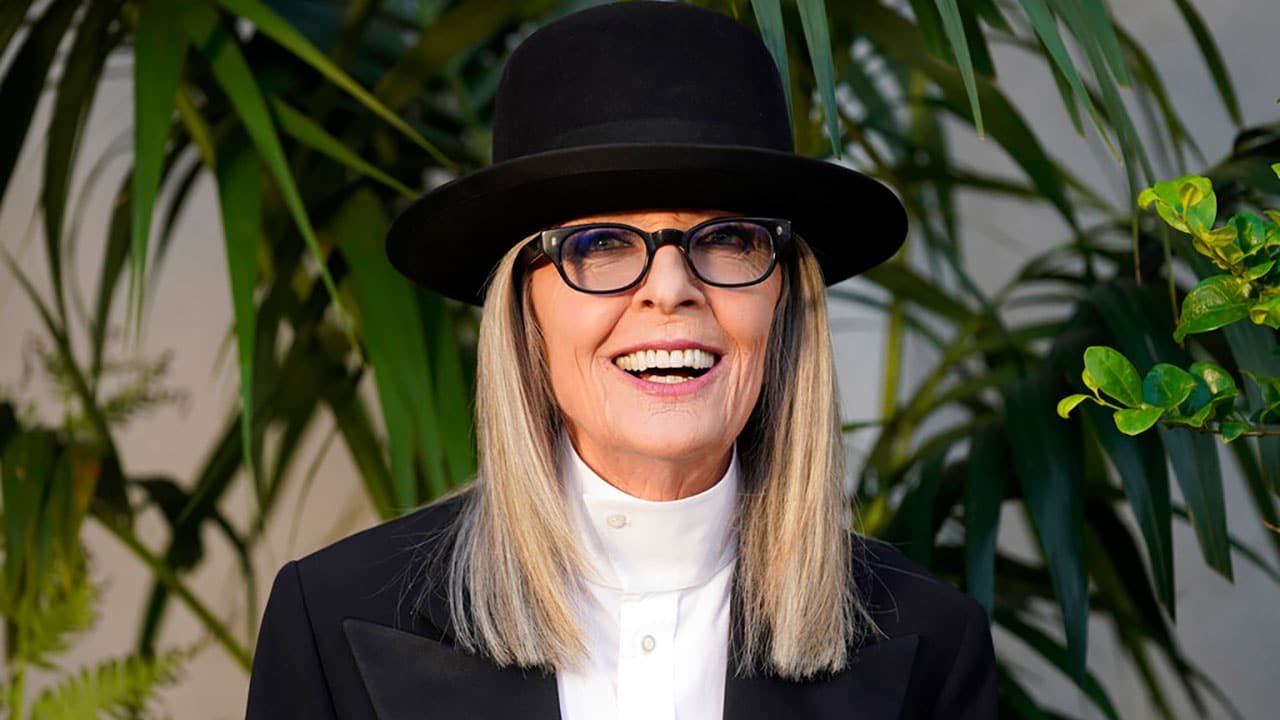
An Enduring Symbol of Creative Courage
The story of Diane Keaton isn’t just about one woman’s success. It’s about the power of staying true when everything pressures conformity. It’s about building a career on your own terms. It’s about proving that originality matters more than perfection.
She never sought to dominate Hollywood. She simply illuminated it. Her humanity shaped every role. Her individuality challenged conventions. Her honesty connected her with millions who felt misunderstood or underestimated.
She leaves behind two children, countless collaborators, and generations of artists she inspired. She leaves fashion trends that still influence runways. She leaves films that will teach and delight for decades. She leaves proof that being unapologetically yourself is the bravest career choice possible.
Diane Keaton died too soon. But she lived completely, creating work that will outlive all of us. Her laughter echoes through every frame she touched. Her spirit remains inimitable, irreplaceable, unforgettable.
She died on 11 October 2025 in California, aged 79.
Her health reportedly declined suddenly; no official cause has been released by the family.
Her landmark works include Annie Hall, The Godfather trilogy, Reds, Marvin’s Room, Something’s Gotta Give, and The First Wives Club.
Her blend of intellect, humour, and originality made her both relatable and revolutionary — a model of authenticity who changed how women were seen on screen.



